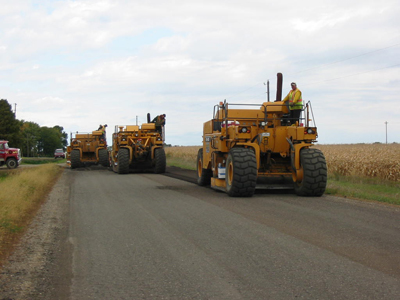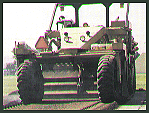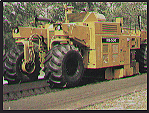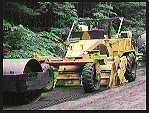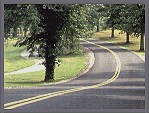Full-Depth Reclamation Defined
FDR is an economical, in-place recycling alternative to road reconstruction. It uses a powerful reclaiming machine to turn an old asphalt pavement into a road base by uniformly pulverizing that full thickness of the old pavement and blending it with a portion of underlying material. This process usually adds bituminous emulsion, chemical or mechanical stabilization agents to enhance the strength of the new base that is sealed with an asphalt friction course or a sealing treatment, depending on expected loads. The process allows for correcting drainage and cross slope problems, as well as widening the roadway.
It makes sense when a pavement can’t be salvaged with milling, overlaying, or recycling techniques due to severe pavement defects, poor drainage, or an inadequate base.
It doesn’t make sense when the existing pavement can be preserved with lesser interventions.
How Does it Work?
Full depth reclamation is a process that offers economic advantages and design alternatives to pavement restoration. But how does it work?
The full-depth reclamation process revolves around the ability to pulverize and blend the deteriorated pavement structure to a specified maximum gradation and incorporate that material into the structural design of the restored roadway. Full depth reclamation offers several in-place alternatives to the designer in creating the desired roadway section. Read more about this process here.
Typical Applications
Full depth reclamation is most commonly used on secondary and farm-to-market roads, but the technology is increasingly being employed on higher-volume primary roads, too, including rural interstates.
Tricks of the Trade
Experienced FDR contractors and engineers use additives to create the ideal base. Bituminous emulsion additives are the most common, but they are often used in combination with chemical additives like lime, portland cement, and fly ash to add strength, as well as mechanical additives like crushed stone, RAP, and sand to correct deficiencies in the existing materials.
What it Costs
Full depth reclamation generally costs 30-50% less than traditional road reconstruction.

